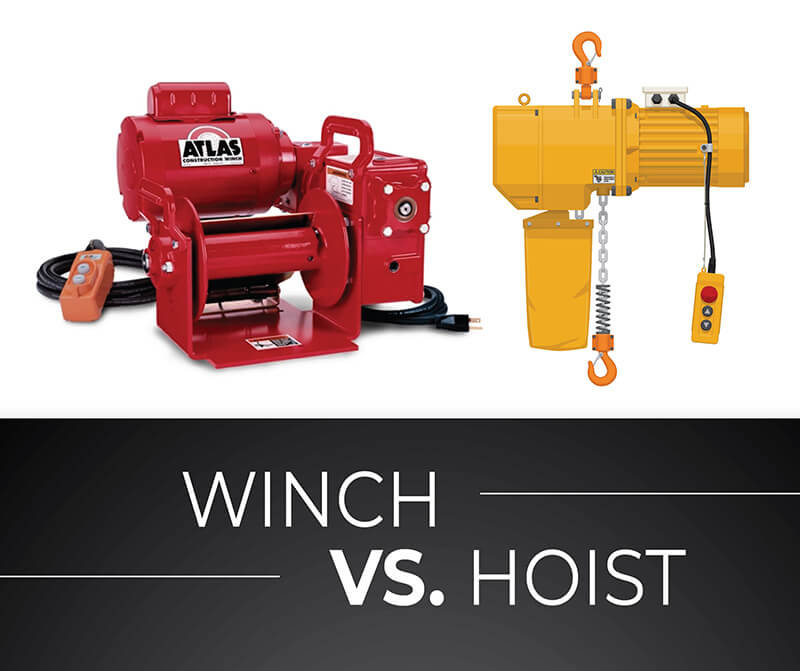In the industrial realm, moving various types of loads can be a daily task. From lifting mixers or pumps to pulling a sludge cart, your business could benefit from a reliable winch or hoist to streamline operations. You may be wondering what the main differences are between a winch vs. hoist and which option is better for your application. We’re here to help clarify that for you.
What are Winches & Hoists?
By definition, a winch is a device that can move many different loads by pulling horizontally, lifting/lowering vertically, and everything in between, including pulling at an incline. Winches operate by using a rope that is anchored to the winch’s drum or drum flange on one end and connected to the load on the other end. Most winches use wire rope, but some can use synthetic rope. When the drum turns, the rope is spooled onto the drum (unspooled if the drum rotation is reversed), and the tension created or released moves the attached load.
On the other hand, a hoist is a device that can move various types of loads for vertical lifting/lowering applications only. Hoists can operate with a wire rope or, more commonly, a chain. Hoists that use wire rope have drums like winches do, but unlike winches that exclusively use drums, many hoists use lift-wheels rather than drums to create tension to move their load.
Overall, a winch can double as a hoist if equipped properly for the intended move. For example, all Thern winches with load brakes can be used for vertical lifting, and those that include a clutch or are without a brake are used for pulling on a horizontal surface only.
A Winch vs. Hoist: Similarities & Differences
Before diving into the differences between a winch vs. hoist, let’s cover the similarities. Both types of equipment can move small- and large-capacity loads. Winches and hoists can both be used for vertical lifting/lowering applications. In addition, they can be categorized as manual (hand-powered), electric, pneumatic, or hydraulic based on the power system required.
The main differences between a winch vs. hoist include the direction and distance of load travel, braking safety, positioning, and size. As mentioned earlier, hoists can only lift loads up and down vertically, while winches are more versatile when it comes to the direction of load travel. Since winches use wire rope and hoists more commonly use chains, winches are better for long-distance applications, while hoists are better for short lifts.
Hoists usually have a mechanical braking system to safely lift or lower a load. Many winches are known to use dynamic brakes, but all of Thern’s winches for lifting and pulling at an incline come with mechanical brake systems. For added security, various optional secondary braking systems are available.
Hoists are typically positioned right on top of a load, while most winches can be mounted on the floor, wall, ceiling, or above the load for positioning flexibility. Winches are also commonly used with sheaves that can change the direction of the rope.
If space is a significant factor, a hoist will likely be a better solution than a winch. You need to account for the drum’s size and the winch’s overall footprint, which is usually larger than a traditional hoist.
A Winch vs. Hoist: Ideal Applications
For applications like rooftop lifting tens or hundreds of feet, working with a winch that has wire rope is more manageable and lightweight. For shorter and more frequent lifts, like on a factory floor, hoists are usually a better solution because they can be easily mounted on trolleys on overhead cranes commonly found in factories.
How Thern Can Help
Now that you’re aware of the differences between a winch vs. hoist, you may be wondering how to obtain one for your business. Thern, Inc. and Thern Stage are proud to offer industry-leading winches and hoists for all types of trades and applications. We can help you from start to finish to provide the best solutions to meet your specific needs. Our Senior Application Engineer, Jeff Wilkowski, noted, “We first determine what type of venue our client has. Entertainment or industrial? If the application involves lifting over people, we communicate with our expert theater team to assess and assist.” Connect with us today to get started!
